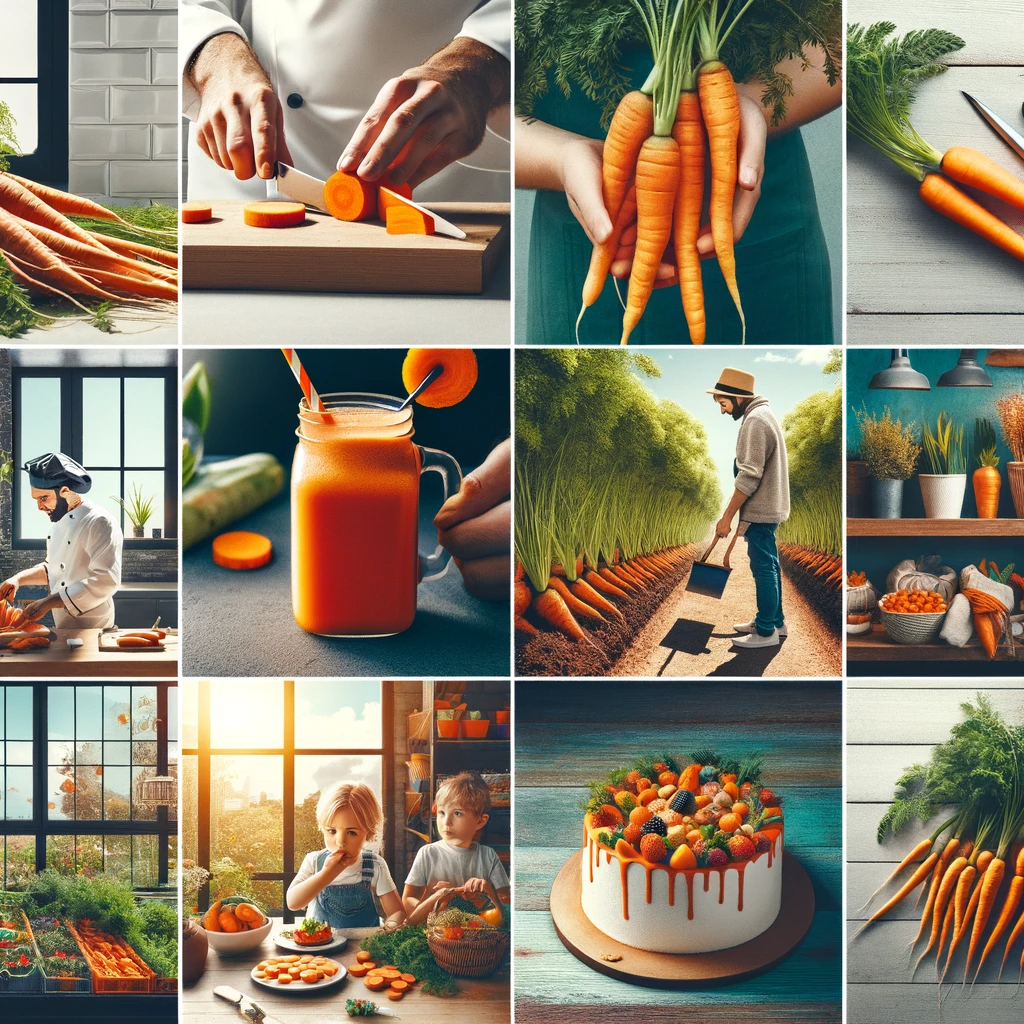Carrots are versatile root vegetables that add a burst of color, flavor, and nutrition to a wide range of dishes. Whether you’re making soups, salads, side dishes, or even desserts, knowing the right cooking techniques can help you maximize the flavor of this humble vegetable. In this article, we will explore various methods to enhance the taste and texture of carrot-based recipes.
1. Choosing the Right Carrots
Before diving into cooking techniques, it’s crucial to select the best carrots for your dish. Here’s what to keep in mind:
a. Freshness Matters
- Opt for fresh, firm, and crisp carrots.
- Avoid carrots that are limp, rubbery, or have visible blemishes.
b. Organic vs. Conventional
- Organic carrots often have a more robust flavor and are free from pesticides.
- Conventional carrots can still be flavorful, so choose what suits your preferences and budget.
c. Variety
- Explore different carrot varieties like orange, purple, or heirloom carrots for unique flavors and colors.
2. Proper Washing and Peeling
Carrots should be thoroughly washed and, if necessary, peeled before cooking.
a. Washing
- Scrub carrots gently under cold running water to remove dirt and debris.
- A vegetable brush can help clean stubborn dirt.
b. Peeling
- Peeling is optional but can improve the texture and remove any bitterness.
- Use a peeler or a knife to remove the skin.
3. Cutting Techniques
The way you cut carrots can impact both their flavor and presentation.
a. Chopping
- For most dishes, chop carrots into bite-sized pieces for even cooking.
- Smaller pieces cook faster and absorb flavors more efficiently.
b. Slicing
- Thin slices work well for salads, while thicker slices are suitable for roasting.
c. Julienne or Shredding
- Julienne carrots for stir-fries or coleslaw.
- Shredded carrots are excellent for adding moisture and sweetness to cakes and muffins.
4. Cooking Methods for Flavorful Carrots
Now, let’s explore various cooking methods to maximize the flavor of carrots:
a. Roasting
- Preheat the oven to 400°F (200°C).
- Toss carrot chunks with olive oil, salt, and pepper.
- Roast for 20-30 minutes until they caramelize and become tender.
- Roasting enhances their natural sweetness and adds a hint of smokiness.
b. Steaming
- Steam carrots over boiling water for about 5-7 minutes.
- This method preserves their vibrant color and nutrients.
- Season with herbs and butter after steaming for a burst of flavor.
c. Glazing
- Glazing involves simmering carrots in a mixture of sugar, butter, and a liquid (like orange juice or honey).
- The glaze creates a sweet and savory coating that elevates the carrots’ taste.
d. Stir-Frying
- Cut carrots into thin strips or matchsticks for stir-frying.
- Cook them quickly over high heat for a slightly crunchy texture.
- Add soy sauce or other seasonings for extra flavor.
e. Boiling
- Boil carrots until they are fork-tender, usually 8-10 minutes.
- Add a pinch of salt to the boiling water for seasoning.
- This method works well when carrots are used in soups and stews.
f. Grilling
- Grill carrot spears over medium-high heat for 10-15 minutes.
- The charred grill marks and smoky flavor add depth to the carrots’ taste.
5. Seasoning and Pairing
Seasoning and pairing carrots with complementary ingredients can make a significant difference:
a. Herbs and Spices
- Experiment with herbs like thyme, rosemary, and dill for a burst of aroma.
- Spices like cumin, coriander, and cinnamon can add warmth and depth.
b. Citrus
- A squeeze of fresh lemon or orange juice can brighten the flavor of cooked carrots.
c. Sweeteners
- A touch of honey, maple syrup, or brown sugar can enhance the natural sweetness of carrots.
d. Butter and Olive Oil
- Adding a bit of butter or drizzling olive oil can make your carrots creamy and luscious.
e. Cheese
- Grated Parmesan or crumbled feta cheese pairs exceptionally well with cooked carrots.
6. Timing Matters
Remember that the cooking time can affect the flavor and texture of carrots. Overcooking can lead to a mushy texture and loss of flavor, while undercooking can result in a raw, earthy taste. Pay attention to the desired doneness for each recipe.
Conclusion
Carrots are a culinary canvas, ready to absorb a multitude of flavors and textures. By selecting the right carrots, using proper cooking techniques, and experimenting with seasonings, you can unlock their full potential and elevate your dishes. So, whether you’re roasting, glazing, or stir-frying, these tips will help you maximize the flavor of this nutritious and delicious vegetable in your next culinary adventure. Happy cooking!
